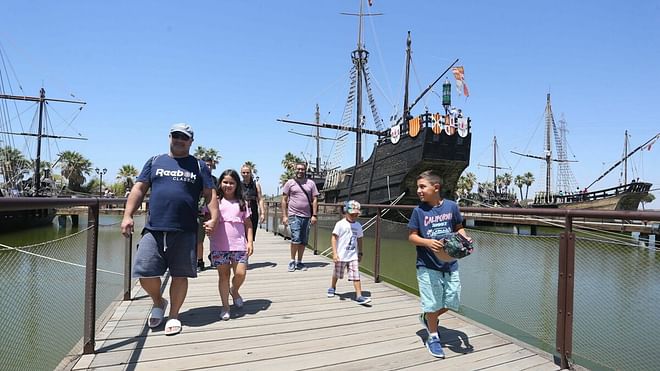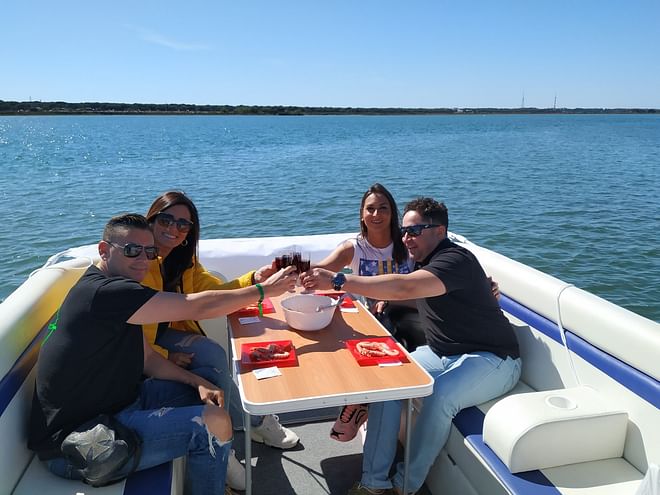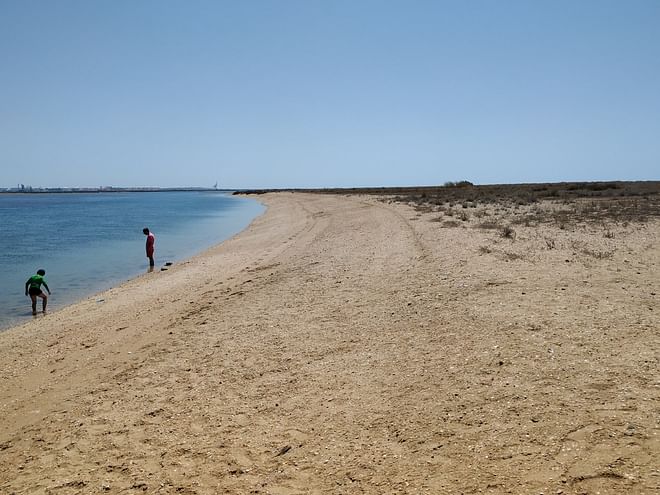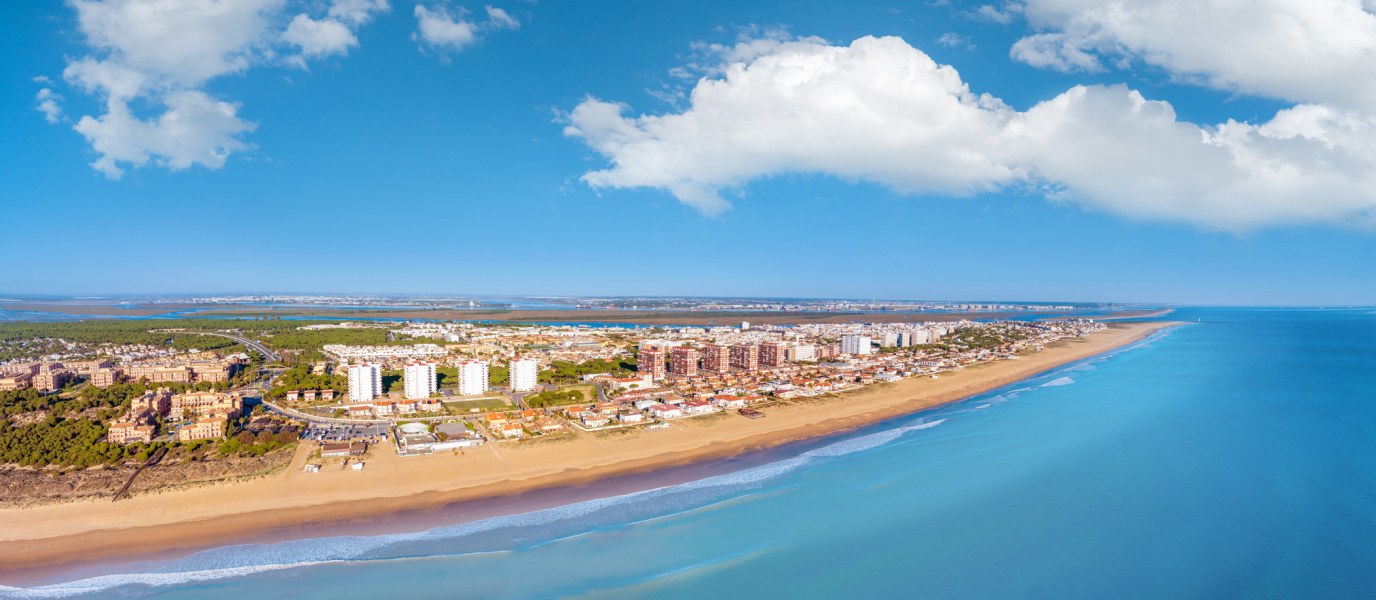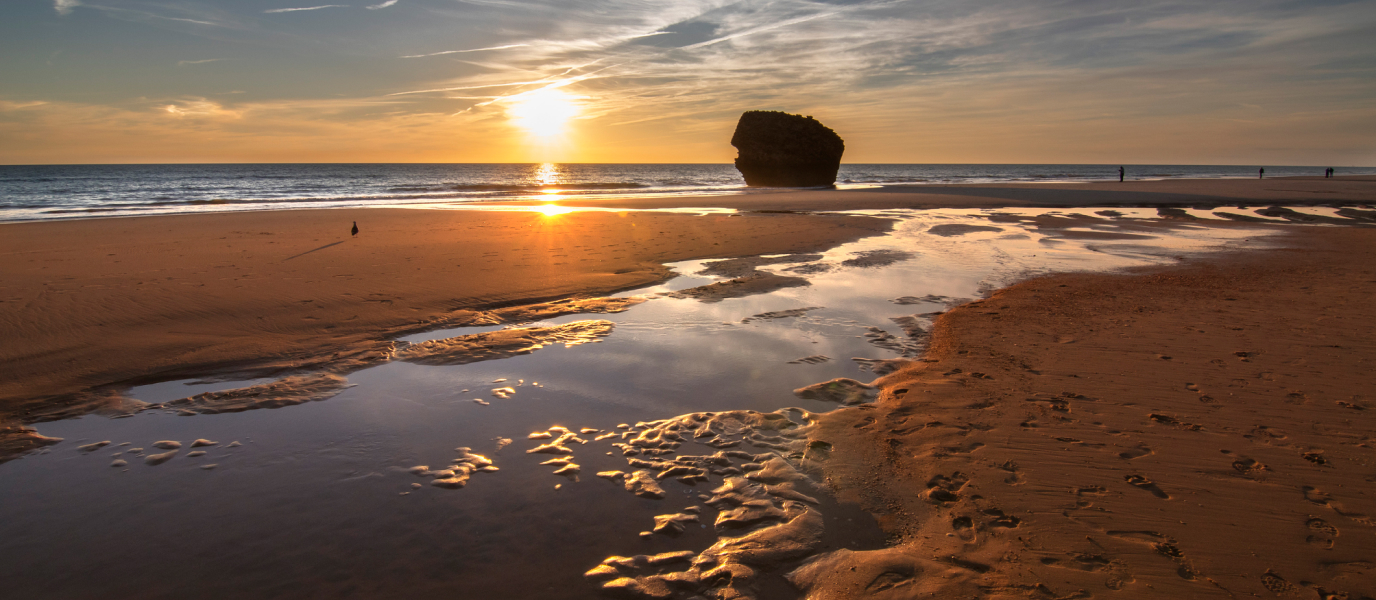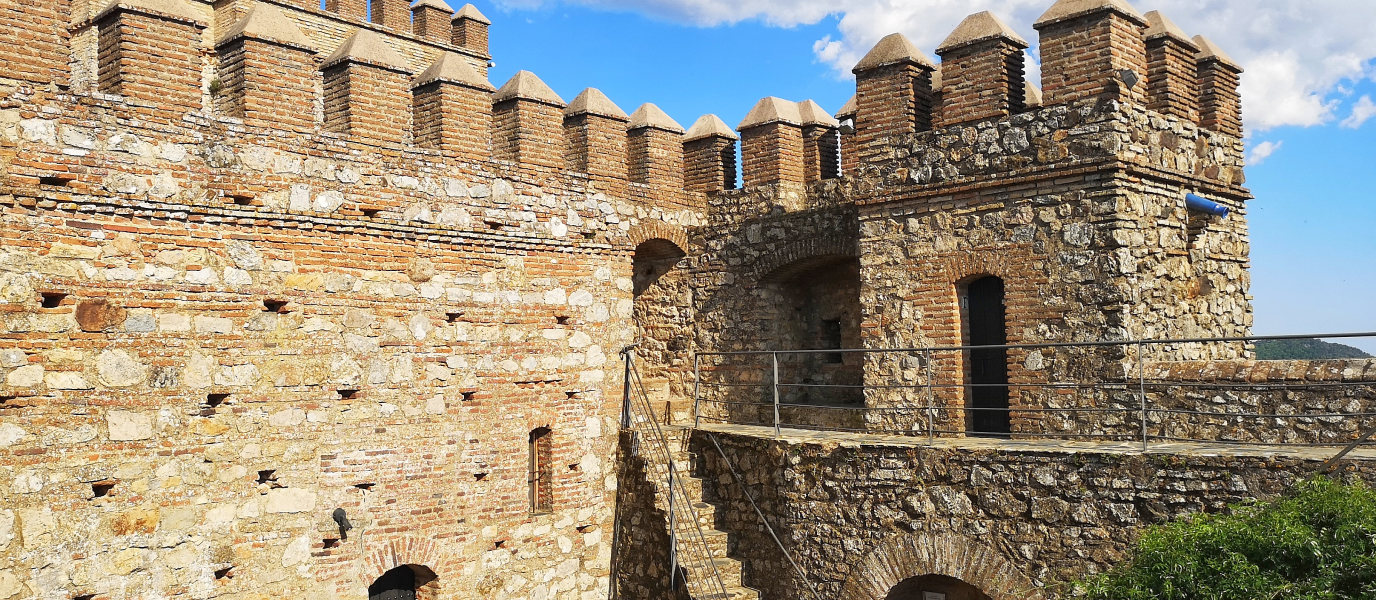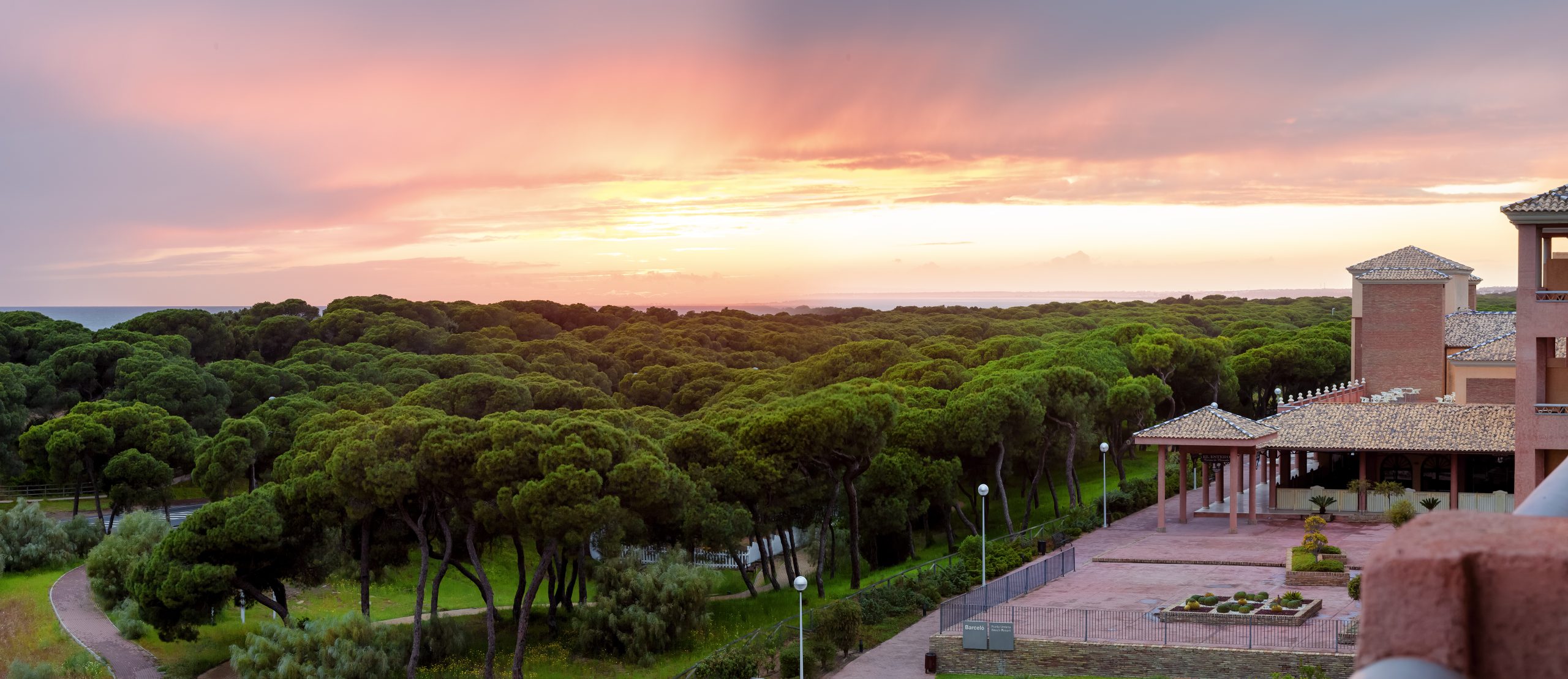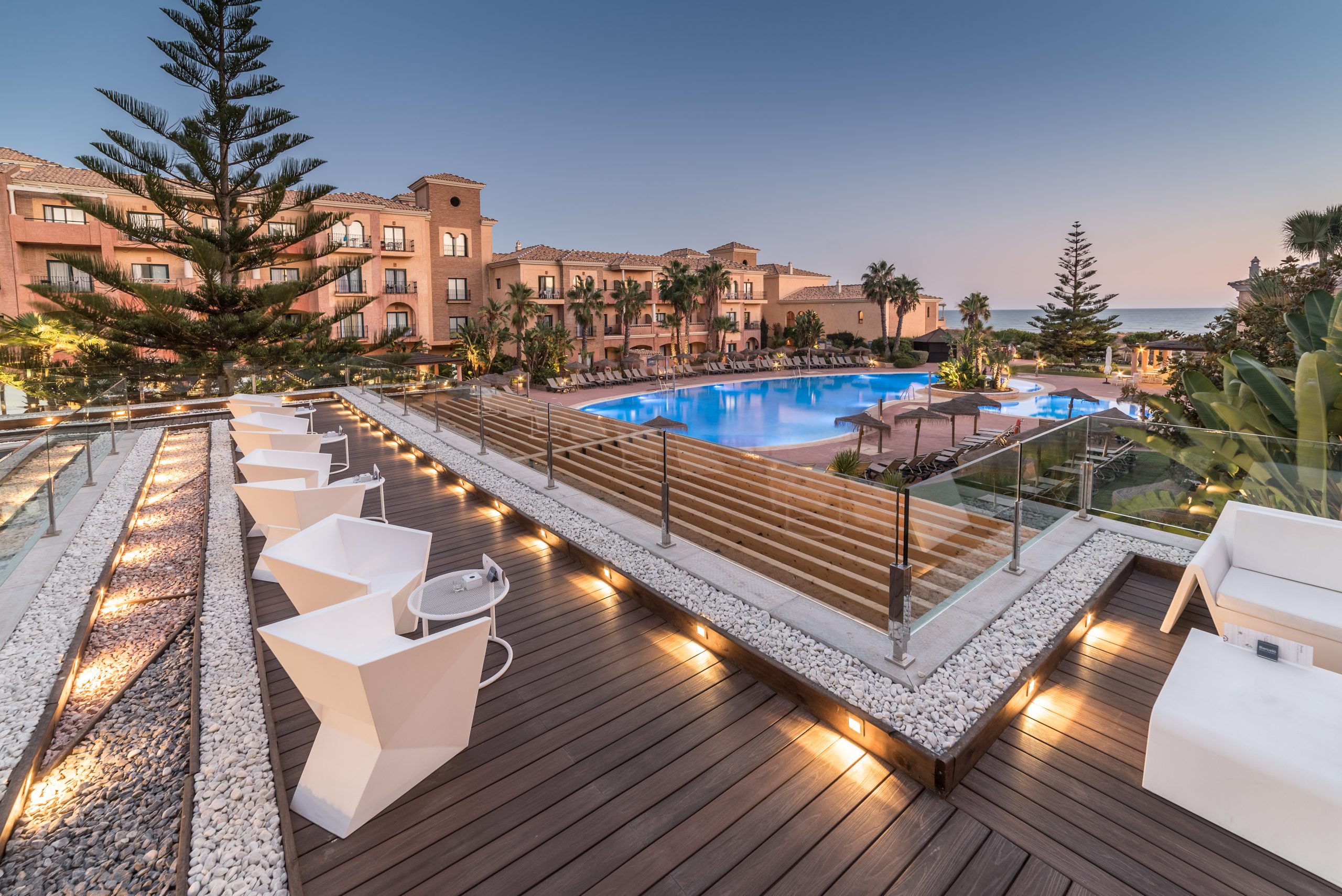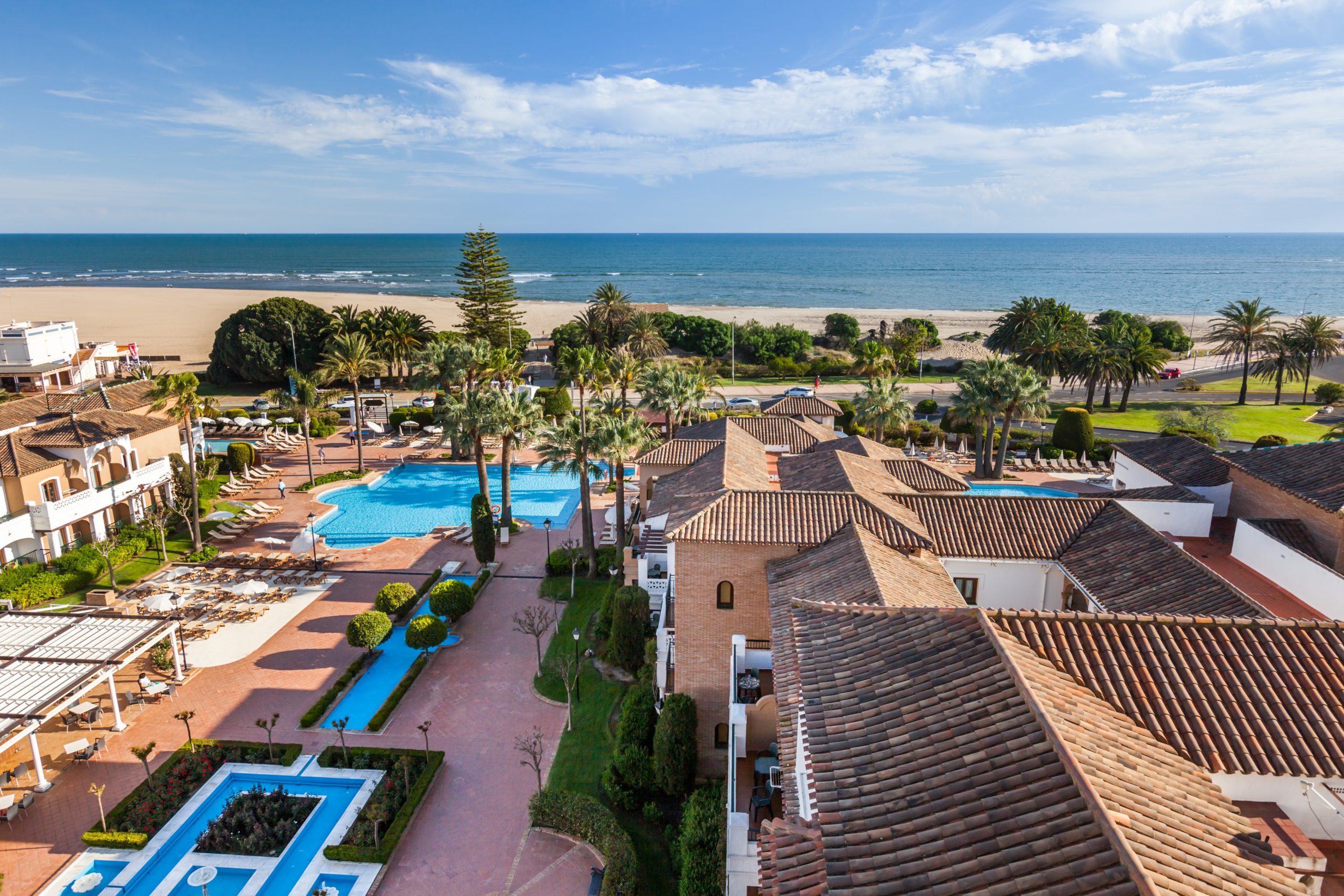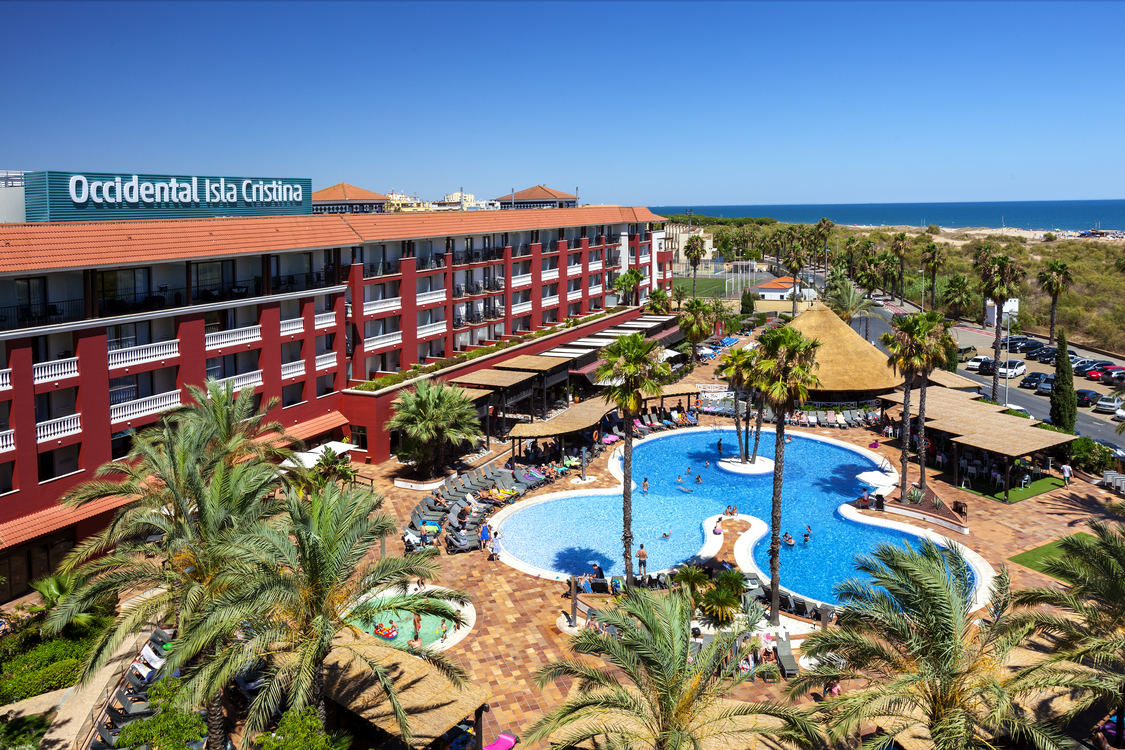There are lots of places you really won’t want to miss in the province of Huelva. They include the Doñana National Park and the villages and natural scenery of the Sierra de Aracena. Then there are the endless beaches of fine, white sand, looking out to the Atlantic, together with their captivating towns and villages and offering every facility and service to guarantee a fantastic holiday. In Huelva, we find El Rocío, a major focus of religious devotion in Spain, which draws hundreds of thousands of pilgrims each spring. The village which is the scene for this celebration is to be found within one of Andalusia’s richest and most spectacular marshlands.
Nor must we forget such historically significant places as the monastery of La Rábida or the town of Palos de la Frontera, from which Christopher Columbus set off for his expedition to the New World. Discover the enormous variety of places and activities to enjoy in Huelva.
But there’s much more to see in the province of Huelva. The province of Huelva is so diverse that, before deciding what to see there, it is worth asking about visitors’ tastes: do they prefer the countryside or the city, the beach or the countryside and the mountains, culture or leisure pursuits, and gastronomy?
Of course, the province of Huelva offers opportunities for enjoyment for all types of travellers. From the beaches of Doñana to the mouth of the river Guadiana, at Ayamonte. And from the stunning Flecha del Rompido to the heights of the Sierra de Aracena.
Huelva’s most picturesque towns and villages
Of course, at the top of the list of all there is to see in the province of Huelva are its pretty towns and villages, with their whitewashed houses and their marked Andalusian character. From among them, we have selected the following:
Related experiences
Ayamonte
Ayamonte is Huelva’s westernmost town, located right at the mouth of the river Guadiana, which marks the frontier with Portugal. Its municipal district is home to some of the loveliest beaches to be found in the entire province — for example, the beach at Isla Canela.
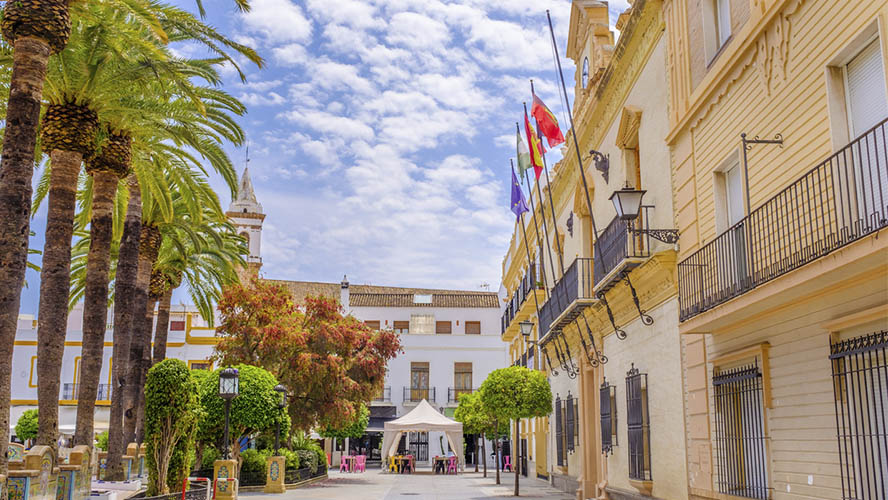
Aracena
Aracena is the main town of the mountain range that bears its name. It is also a pretty white town, with steeply sloping streets. Above the town stands a picturesque castle of Moorish origin, which was later occupied by the Knights Templar.
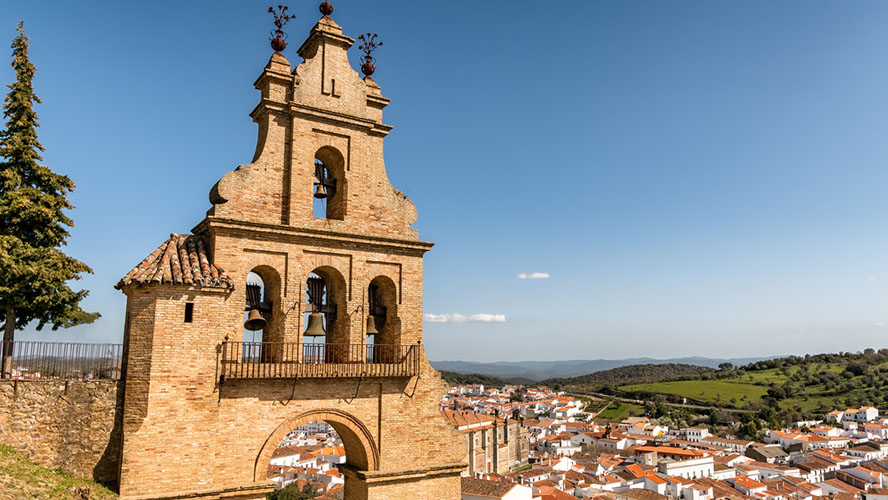
Almonte
In the municipal district of Almonte, one of Huelva’s largest districts, lies the village of El Rocío, the glorious Matalascañas beach and part of the Doñana National Park. Who could ask for more?
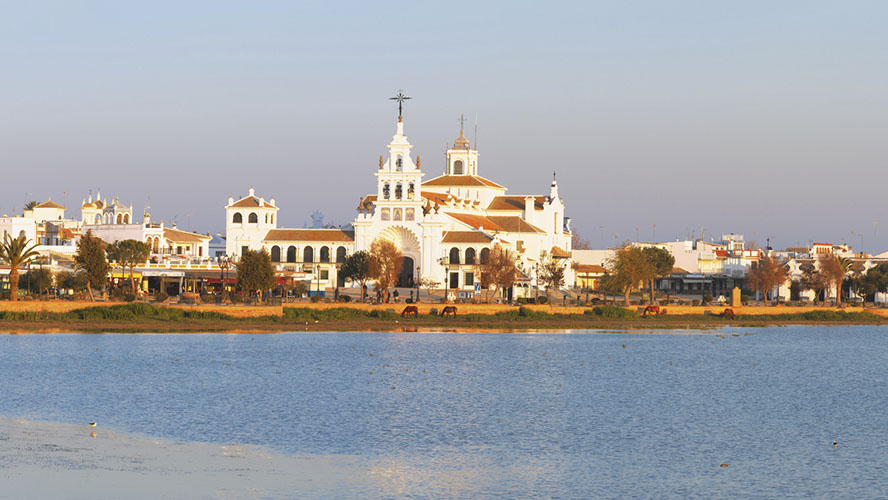
El Rompido
El Rompido is one of the province of Huelva’s most popular tourist spots. The key to its success is its beaches, sheltered from the Atlantic.
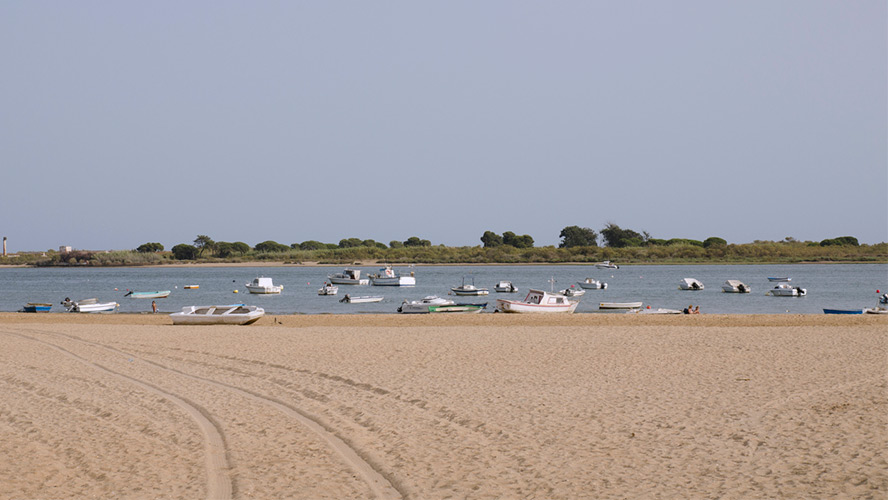
Palos de la Frontera
Known as the cradle of the Discovery of America, as it was from Palos de la Frontera that Christopher Columbus’s three ships set sail for the new continent on 3 August 1492.
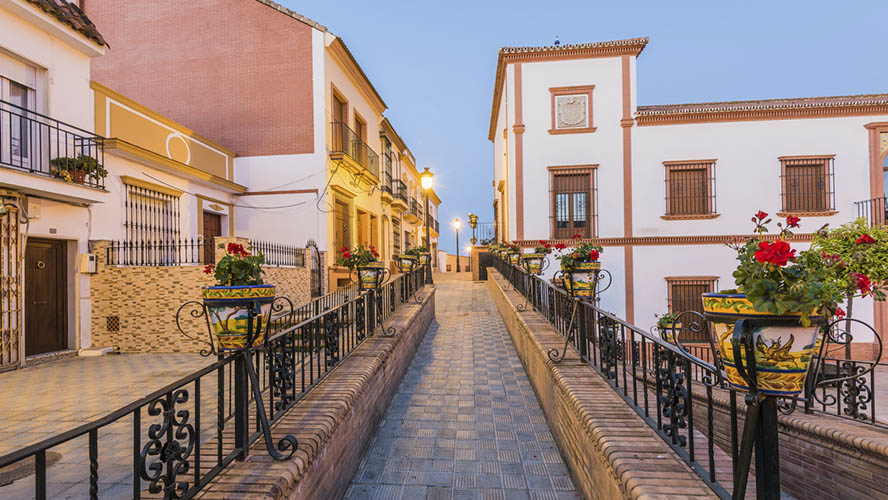
Moguer
No less than a third of the population of Moguer signed up to sail with Christopher Columbus to the New World and the village itself donated ships and money to the cause too. This is what makes it most famous, but it was also home to Nobel Prize-winning writer Juan Ramón Jiménez, to whom a museum exists in his honour.
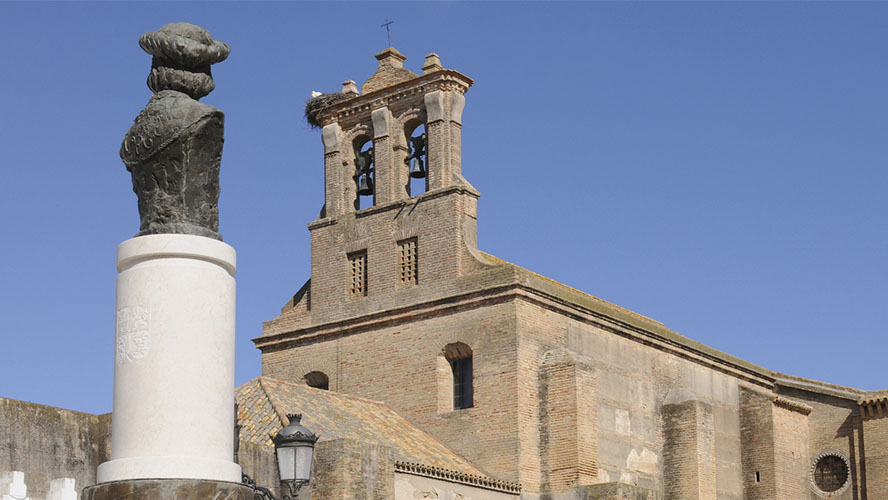
Jabugo
In the heart of the Sierra de Aracena, visitors can see, smell, and above all eat, this town’s main attraction. Because if Jabugo is famous for anything at all, it is for the wonderful Iberian hams produced here.
Linares de la Sierra
This pretty white town, set into the Sierra de Aracena and Picos de Aroche Natural Park, is the perfect base from which to explore the surrounding area and to set out on hiking trails. It was declared an Asset of Cultural Interest in 2005, and this came as no surprise given the great charm of this village of barely 300 inhabitants. One only has to take a stroll along the cobbled streets of its historic centre to find attractive spots for photos or places to visit, such as the parish church of San Juan Bautista, or the public wash house, which reflects the architecture of nearby buildings.
Among the 80 municipalities you can see in Huelva, the following are definitely worth a visit:
Cortegana
Cortegana, in the Aracena district, is a typical Andalusian white town with an imposing castle of uncertain origin perched above it. The castle, along with the Church of the Divine Saviour, has been declared an Asset of Cultural Interest.
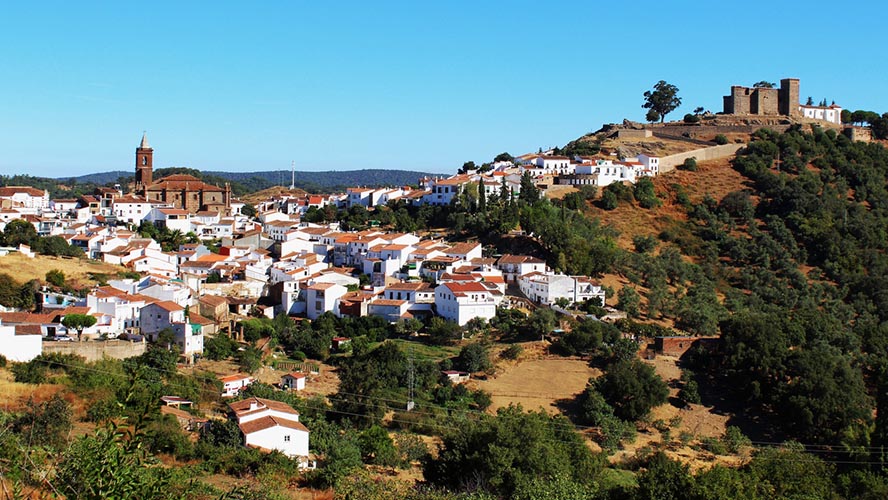
Almonaster la Real
This is, without a doubt, one of the most delightful villages to be found in the province of Huelva. So much so that it has been recognised as a Historic-Artistic Site since 1982. Almonaster la Real is another village in the Sierra de Aracena.
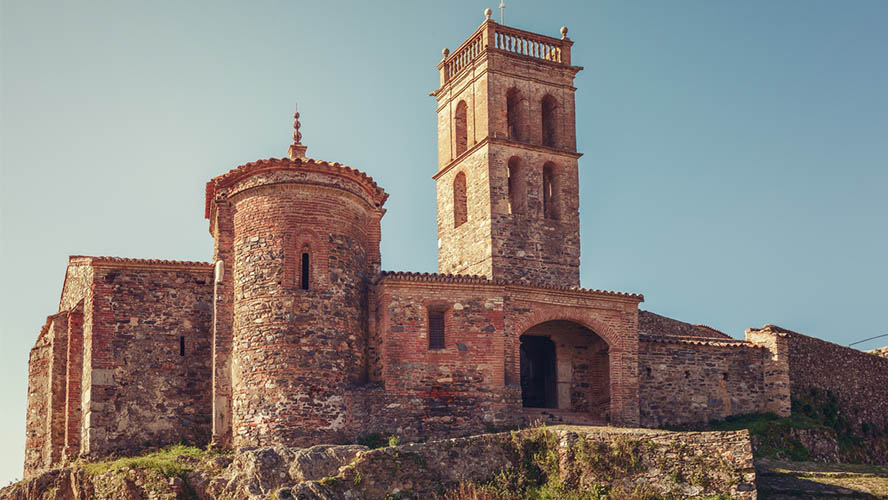
Sanlúcar de Guadiana
A veritable picture postcard scene is this little village with its immaculate whitewashed houses, situated on the bank of the river Guadiana. It would be impossible to understand this Sanlúcar (there is another, Sanlúcar de Barrameda, near the Guadalquivir, in the province of Cádiz) without its neighbour, the Portuguese village of Alcoutin, which stands on the opposite bank of the river.
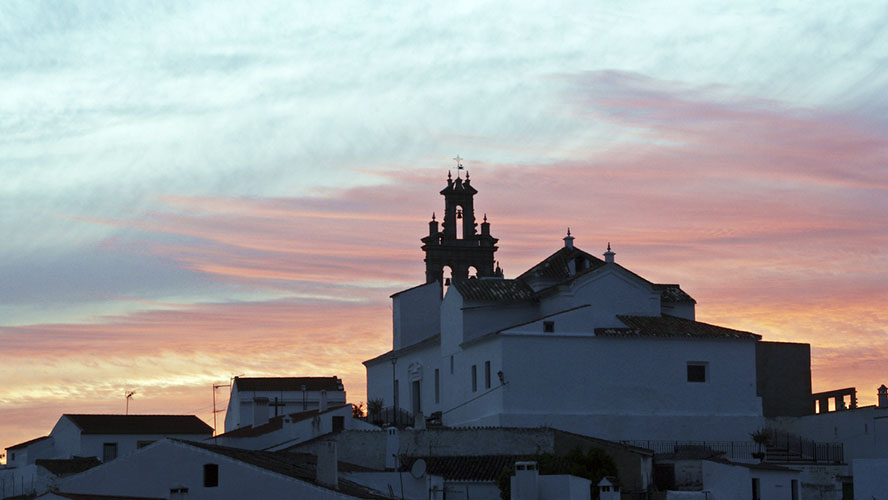
Niebla de Huelva
A walled town that has seen better days, although it was once of great importance, particularly during the Andalusí period. Niebla still preserves some vestiges of its former splendour.
Alájar
A town that enjoys a particularly beautiful natural setting in the Sierra de Aracena. The town itself is no less lovely, with its whitewashed houses and reddish roofs, and has been declared a Site of Historic and Artistic Interest.
The city of Huelva
Huelva is one of the lesser known of Andalusia’s capital cities, so we are sure that it will both surprise and impress you. It has a history dating back over five thousand years, and it has been home to several peoples, all of whom have left an impression here.Its links with the maritime world (in the Plaza de las Monjas, you can see a statue of Christopher Columbus) and with mining are also facets that have marked its development. A visit to the city of Huelva must include such interesting places as the Tinto dock in the Ría de Odiel, where minerals were loaded onto boats to be transported to the British Isles.
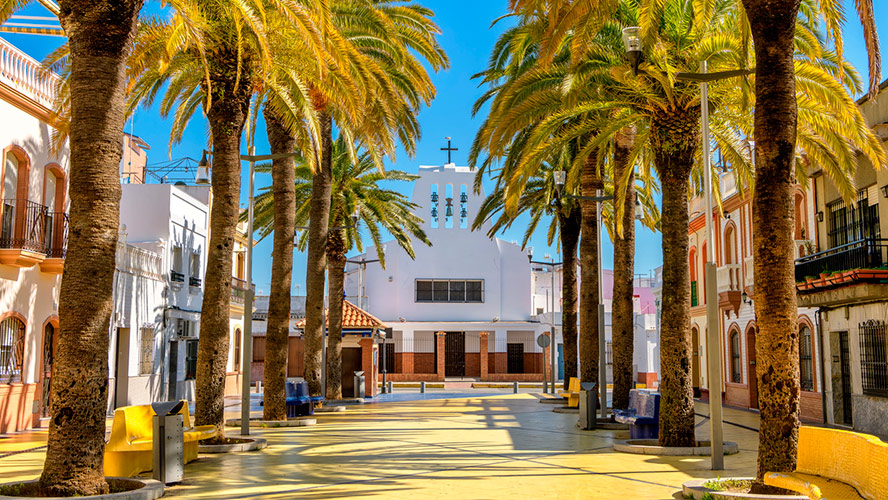
Also of interest are the fifteenth-century chapel of the Santuario de Nuestra Señora de la Cinta, with its attractive white façade, and the cathedral of Nuestra Señora de la Merced. If you have time, it is worth paying a visit to Huelva Museum, where you can admire the large collection of archaeological finds.
Visit Huelva’s natural landscapes
Huelva’s natural scenery alone would provide plenty for the visitor to enjoy. Below we list some of the most outstanding examples, but there can be no doubt that it is well worth touring this part of the country and exploring its different natural landscapes:
Gruta de las Maravillas [Cave of Wonders]
Located in the municipality of Aracena, the Gruta de las Maravillas was the first cave to be opened to the public in Spain, in 1914. The combination of large chambers, stalactites, stalagmites and underground lakes is a wondrous sight to behold.
The Riotinto mines
It is true that the Riotinto Mines are an example of a natural environment exploited by man in order to extract minerals. But once this activity was abandoned, what has remained is a truly authentic place with its own unique characteristics. This is particularly true of the River Tinto itself, so-called because of the reddish colour of its waters.
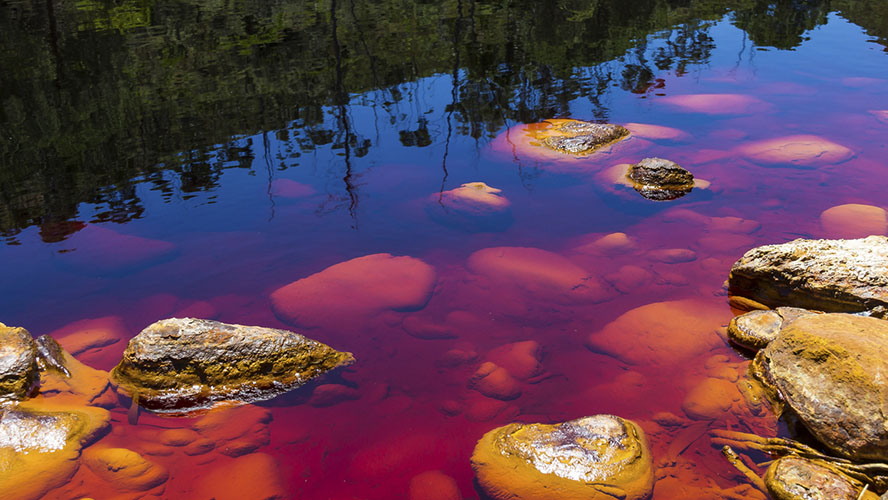
Sierra de Aracena
The Sierra de Aracena and Picos de Aroche Natural Park is one of the largest such reserves in Andalusia, and is certainly one of the essential places to see in the province of Huelva. This is because of both its natural wealth and its sustainable use of resources.
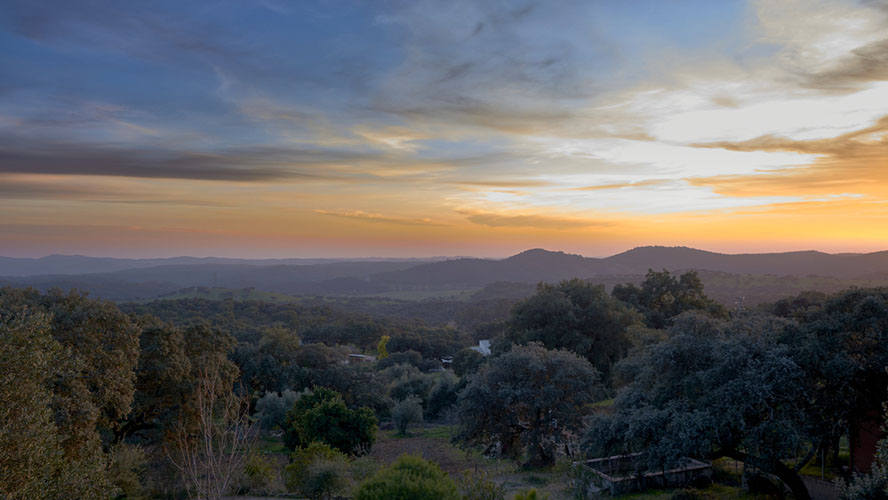
Doñana National Park
The Doñana National Park needs little introduction. The jewel in the crown of all Spain’s national parks, and home to such valuable species as the Iberian lynx, the imperial eagle, and the spur-thighed tortoise.
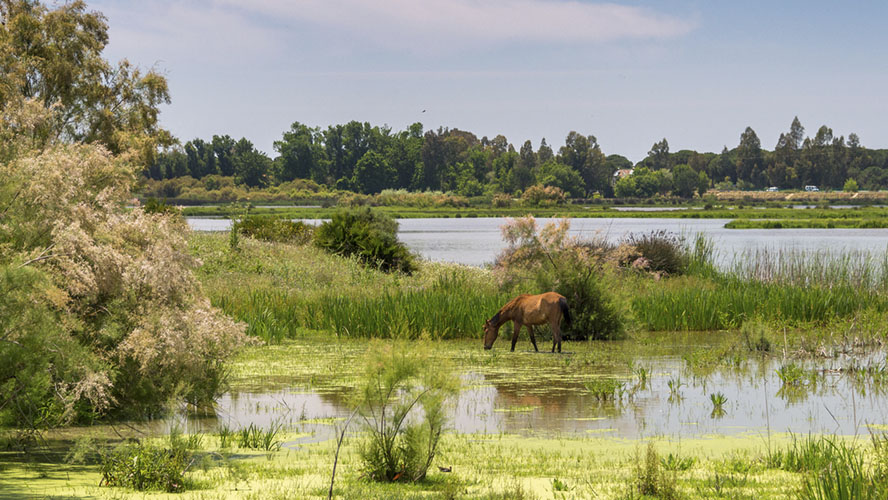
The Odiel marshlands
Between the provincial capital and the Punta Umbría area lie the Odiel marshlands, declared a Biosphere Reserve by UNESCO, and a Protected Natural Area. The marshes are an important nesting site for birds, including flamingoes and spoonbills, the latter being a species at serious risk of extinction.
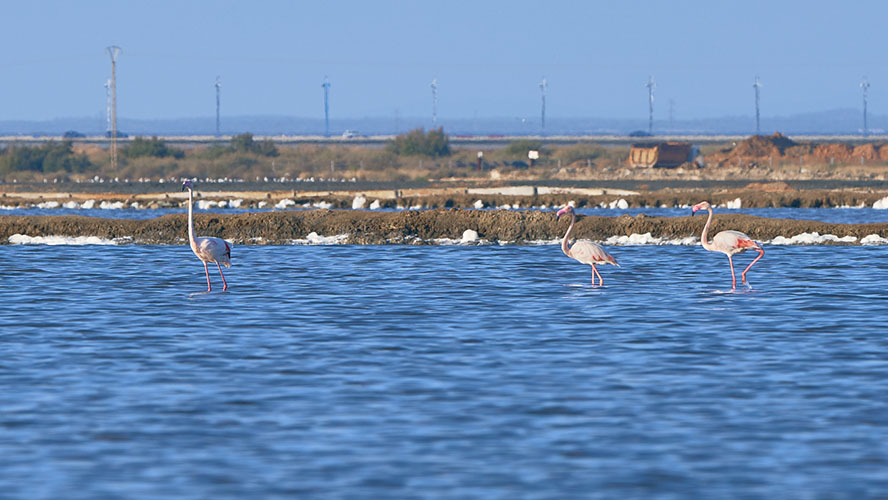
The Soto Dolmen
The Soto Dolmen, located in Trigueros, is one of the most important megaliths to have been discovered in the province of Huelva. Dating from between 3000 and 2500 B.C., it is one of Andalusia’s most remarkable Neolithic structures. It was discovered in 1922 by Armando Soto (hence its name) on the La Lobita estate, and was declared a National Monument in 1931. It was built as a long corridor, and measures over 20 metres in length by 82 centimetres wide. It is open to visitors throughout the year, although booking in advance is recommended.
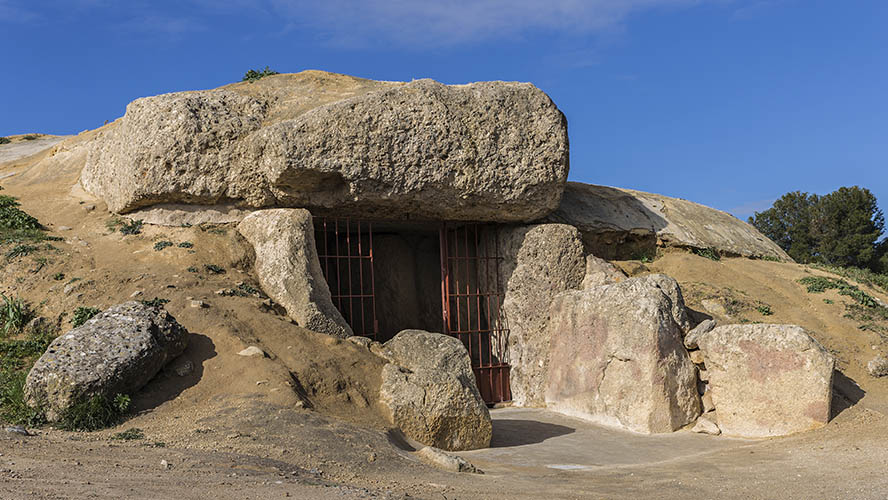
Beaches in the province of Huelva
Huelva’s coastline boasts several magnificent beaches, so it is difficult to come up with a fair selection. Below, we name some that we particularly like, and tell you why you should visit them; then you can choose those that most appeal to you.
El Rompido beach
The beach at El Rompido is one of our favourites thanks to its authentic character. Interestingly, the best part of the beach is the strip of sand known as La Flecha, which belongs to the protected area of the Marismas del Río Piedras Natural Park. It is well worth stopping off at La Flecha (which can be accessed by boat) to appreciate its wild, unspoilt nature, and to enjoy some solitude.
From El Rompido, you can continue your tour, visiting Portil beach, a sandy beach stretching for around three kilometres which, year in and year out, is awarded a blue flag attesting to both the quality of its waters and its tourist services and facilities.
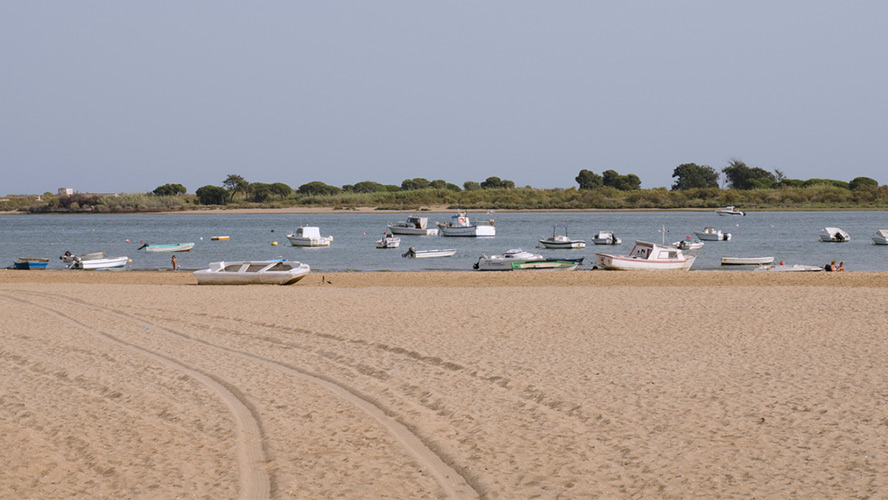
Matalascañas beach
The extremely well-known beach of Matalascañas is located in the municipality of Almonte. With its 5 kilometres of sand, it is a magnet for bathers during the summer. Visitors love the contrast of its wild appearance in some places with the more tourist-orientated offers in others. Here, you can also enjoy the beautiful sand dunes in the Parque Dunar de Matalascañas, which covers an area of 130 hectares, and where the landscape is dotted with coastal vegetation and pine forests near the sea. There are paths to enable you to move around this amazing landscape.
Also in this municipality, you can visit the Torre del Lloro beach, with its characteristic ruined watchtower and its crystal-clear waters.
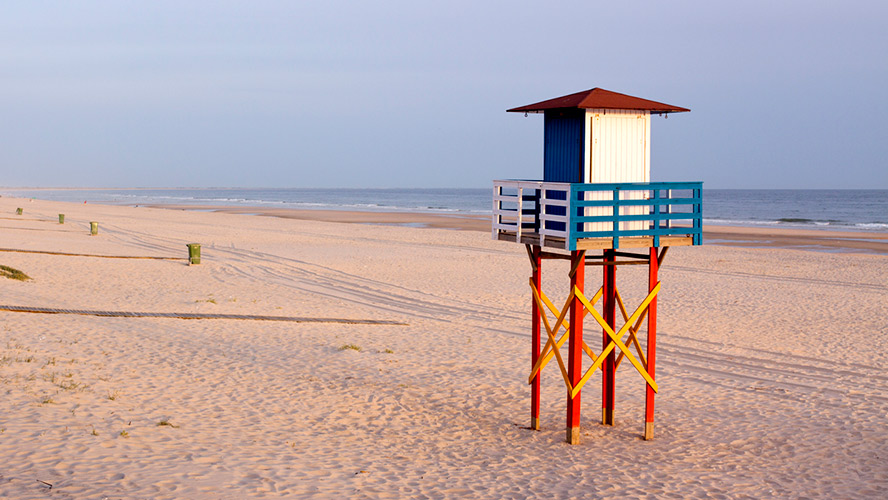
Punta Umbría beach
No excuse is needed to visit Punta Umbría beach which, though an urban beach, is edged with pine and juniper trees. This beach possibly offers the most comprehensive range of services for tourists, as there is no shortage of bars or beach bars where you can treat yourself. The water quality is regularly acknowledged by the award of a blue flag, and the beach offers good facilities for water sports such as surfing and windsurfing. This beach is also ideal for people with reduced mobility, as there are very few barriers, and you can park your car next to the beach.
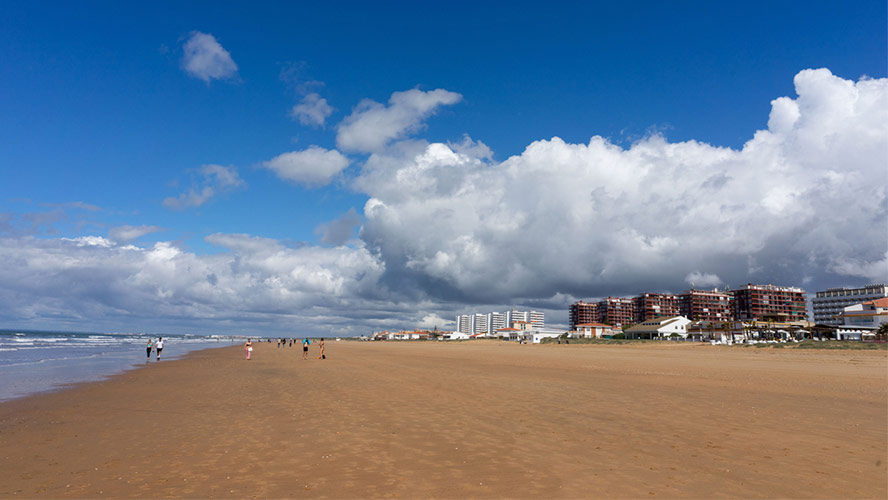
Isla Canela beach
All that now remains is for us to recommend a visit to Ayamonte and the glorious Isla Canela beach, where you can enjoy 5 kilometres of golden sands bathed by the limpid (and cold) waters of the Atlantic. If you visit outside the summer season, the beach’s natural scenery, with its string of sand dunes, will make you feel as if you are the only person on Earth.It is, moreover, an ideal beach for water sports such as surfing, kitesurfing or windsurfing. Nor will you need to move far to find a great range of places to eat, all offering the superb flavours of typical Huelva cuisine. And if you want to carry on with your tour of the area’s beaches, continue along Punta del Moral beach, close to the mouth of the river Carreras — a smaller beach, but perfect for families.
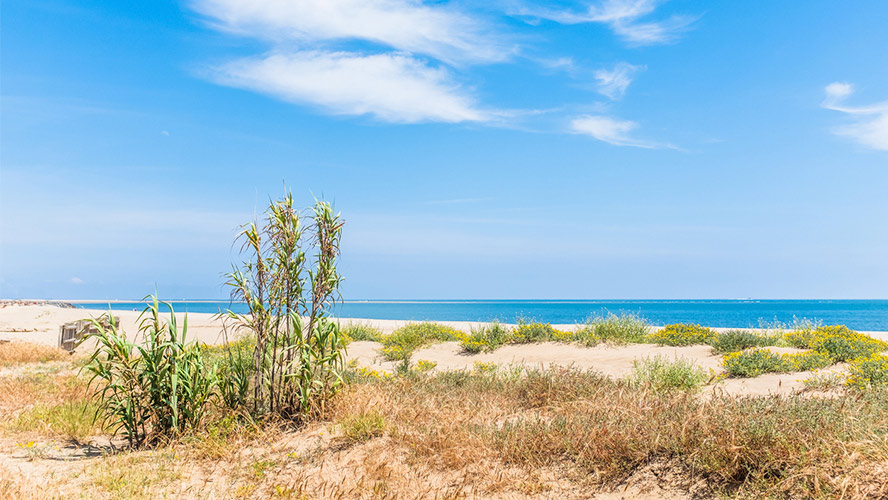
Best hotels in the province of Huelva
Huelva has a very wide range of excellent hotels. Whether you prefer to stay on the coast or inland, Barceló Hotels offers fantastic possibilities. Let’s start inland, with the Barceló Aracena, a four-star hotel with 69 spacious guest rooms, 14 independent villas, swimming pools, a spa, a gymnasium, etc. One very special spot is the hotel’s panoramic B-Heaven terrace, which offers views of the Sierra de Aracena and of the town’s castle.
From the mountains, we now make our way down to the coast, and the Occidental Isla Cristina, a 4-star, beach-front hotel with 233 guest rooms and 110 apartments. The hotel offers superb facilities, with swimming pools, a terrace, paddle tennis courts, a sauna, and more, all of which guests can enjoy with our All Inclusive option. Also by the sea is the Barceló Isla Canela with 349 guest rooms, swimming pools, gardens, children’s club and every comfort and convenience.
Finally, we come to the Barceló Punta Umbría Mar, a 4-star hotel offering an All-Inclusive package. It is an ideal choice for families, with its themed restaurants, spa, and so on. The Barceló Punta Umbría, has a strong Andalusian flavour, and is perfect for couples seeking a quiet holiday. Don’t miss the delicious rice dishes served in its Arrozante restaurant.
We hope you enjoy your visit to this province which, like Málaga, Cádiz and Almería, will surprise you with its endless list of unmissable attractions.






































































